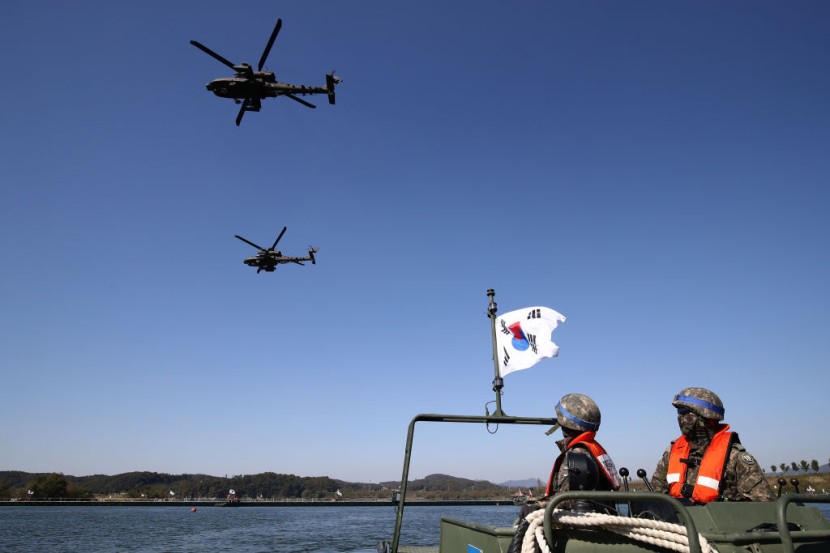
North Korea launched 130 artillery projectiles into inter-Korean maritime buffer zones on Monday as South Korea and the United States began periodic military exercises near the border.
According to South Korea's Joint Chiefs of Staff, the artillery rounds were launched from Jangsan Cape in South Hwanghae Province and Kumgang County in Kangwon Province at around 2:59 p.m. local time on Monday.
The shells landed within the buffer zone but north of the Northern Limit Line, which is against the terms of an agreement made in 2018, according to a report from The Korea Herald.
In a military tension reduction accord at the inter-Korean summit on Sept. 19, 2018, the two Koreas committed to cease all buffer zone live-fire and maritime mobility drills. Since then, North Korea has defied the agreement 16 times.
The JCS reported that South Korean forces had warned their North Korean counterparts numerous times about the artillery fire, with the assumption that several rocket launchers were responsible for the attacks. It added that North Korea's military has been breaking the terms of the military agreement by shooting artillery at the eastern and western marine buffer zones.
US, South Korea Boost Readiness as Escalations Increase
South Korea's Joint Chiefs of Staff urged Pyongyang to cease its actions right away as it tracks North Korean military moves. It also noted that Seoul's military is strengthening a "readiness posture in preparation for contingencies" in collaboration with the United States.
Cheorwon County, Gangwon Province, said on Monday that North Korea had opened fire with artillery as South Korea and US Forces Korea started two days of live-fire training in the area.
There were going to be around 50 artillery rounds fired from multiple-launch rocket systems and 140 artillery shells fired from K-9 self-propelled howitzers by the South Korean and American armed forces.
According to KCNA, which cited a spokesperson for the Korean People's Army's General Staff, North Korean forces opened fire after detecting what they believed to be dozens of "projectiles" launched from the South near their shared border.
Reuters reported that an unnamed spokesperson for the North warned that the country would respond forcefully and with overwhelming military action to any provocation, adding that "the enemy should immediately cease military actions that cause the escalation of tensions near the front lines" where monitoring is doable.
Pyongyang "sternly" warns "the enemy" not to cause any undue "escalation of tension" on the front lines.
Monday saw South Korea and the United States perform a combined land-based fire simulation in Cheorwon County, in the center of the peninsula, not far from the border. They will keep practicing on Tuesday.
North Korea's Nuclear Threat Remains
This year, the allies have increased combined military drills to dissuade the nuclear-armed North, which has restarted long-range intercontinental ballistic missile launches for the first time since 2017 and is preparing to continue nuclear weapons tests.
According to a source, reported by Fox News, Kim Jong-un recently displayed military power by firing shells into a buffer zone along the sea border.
The isolated nation launched a ballistic missile that crashed into the ocean southeast of the Korean peninsula in the middle of November.
This kind of aggressive actor conduct is nothing new for South Korea.
As recently as this year, South Korea had to launch fighter aircraft without prior notice when it discovered Chinese (and six Russian) airplanes in its air defense identification zone (KADIZ).
Related Article : North Korea Orders Parents To Give Children Patriotic Names Related to Weapons, Missiles








